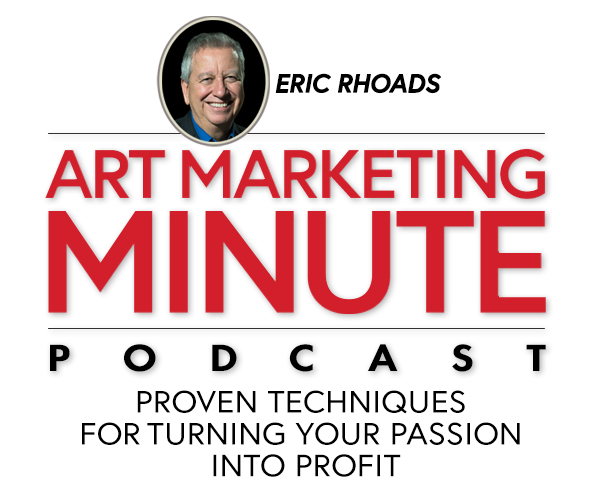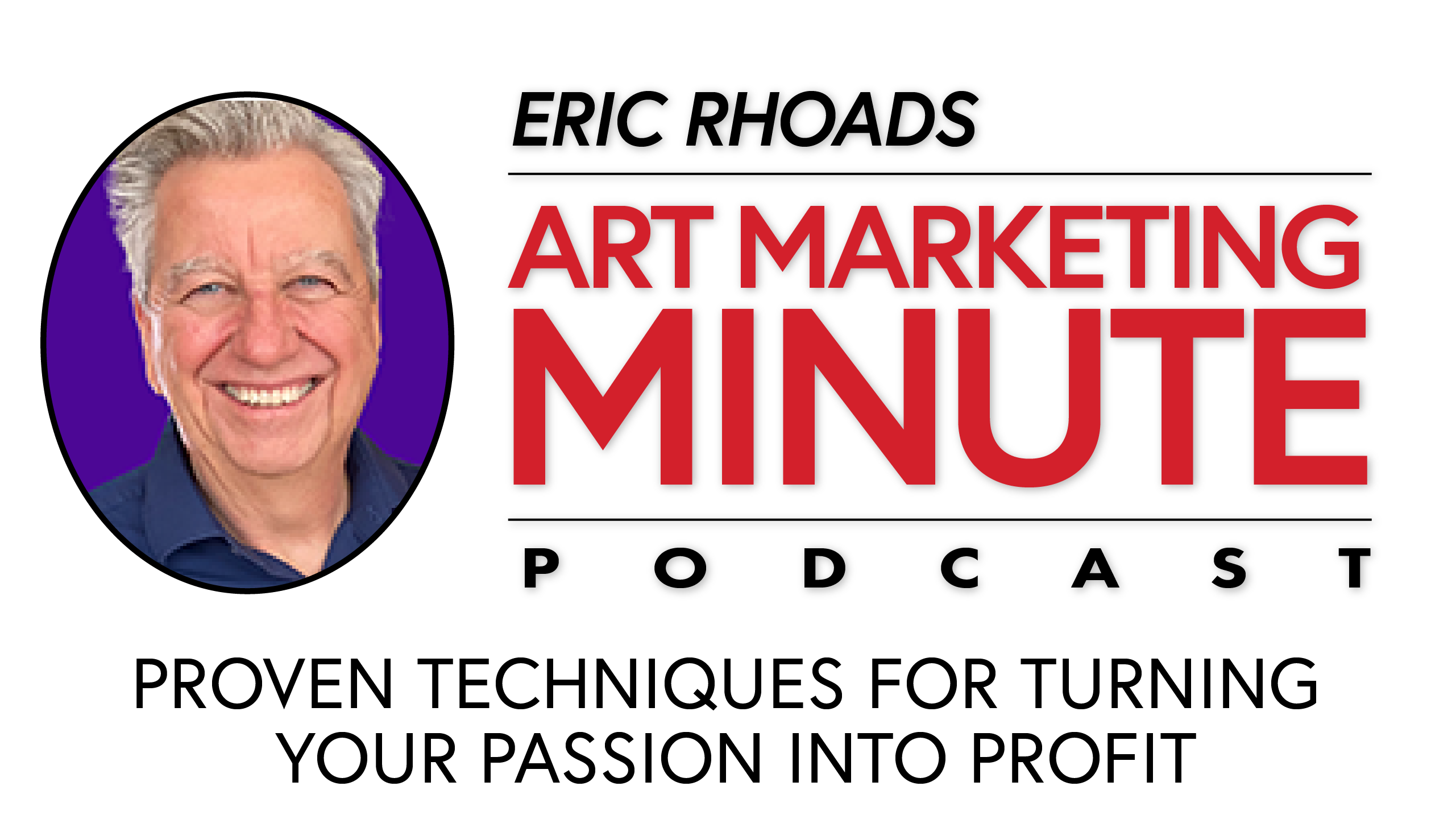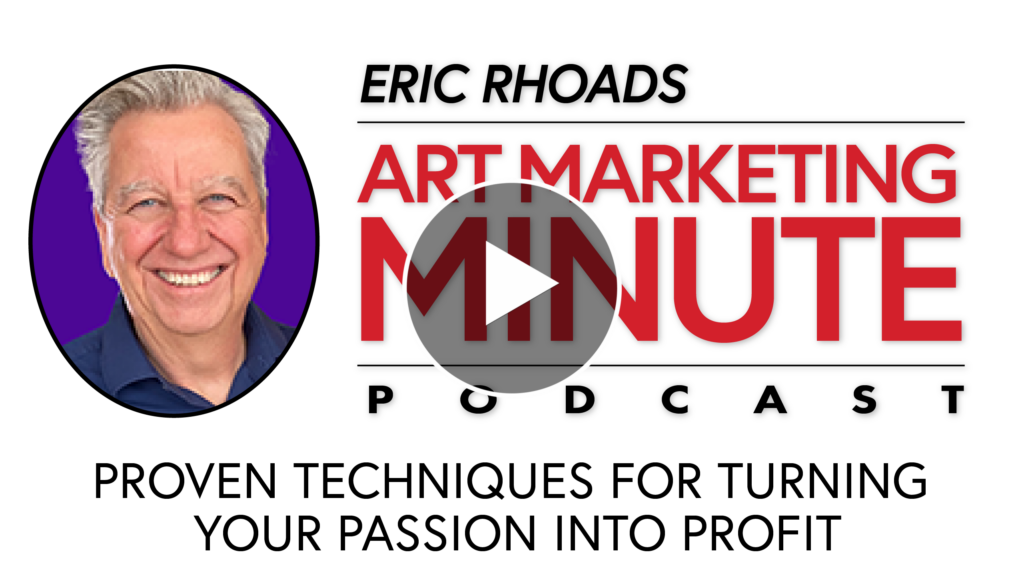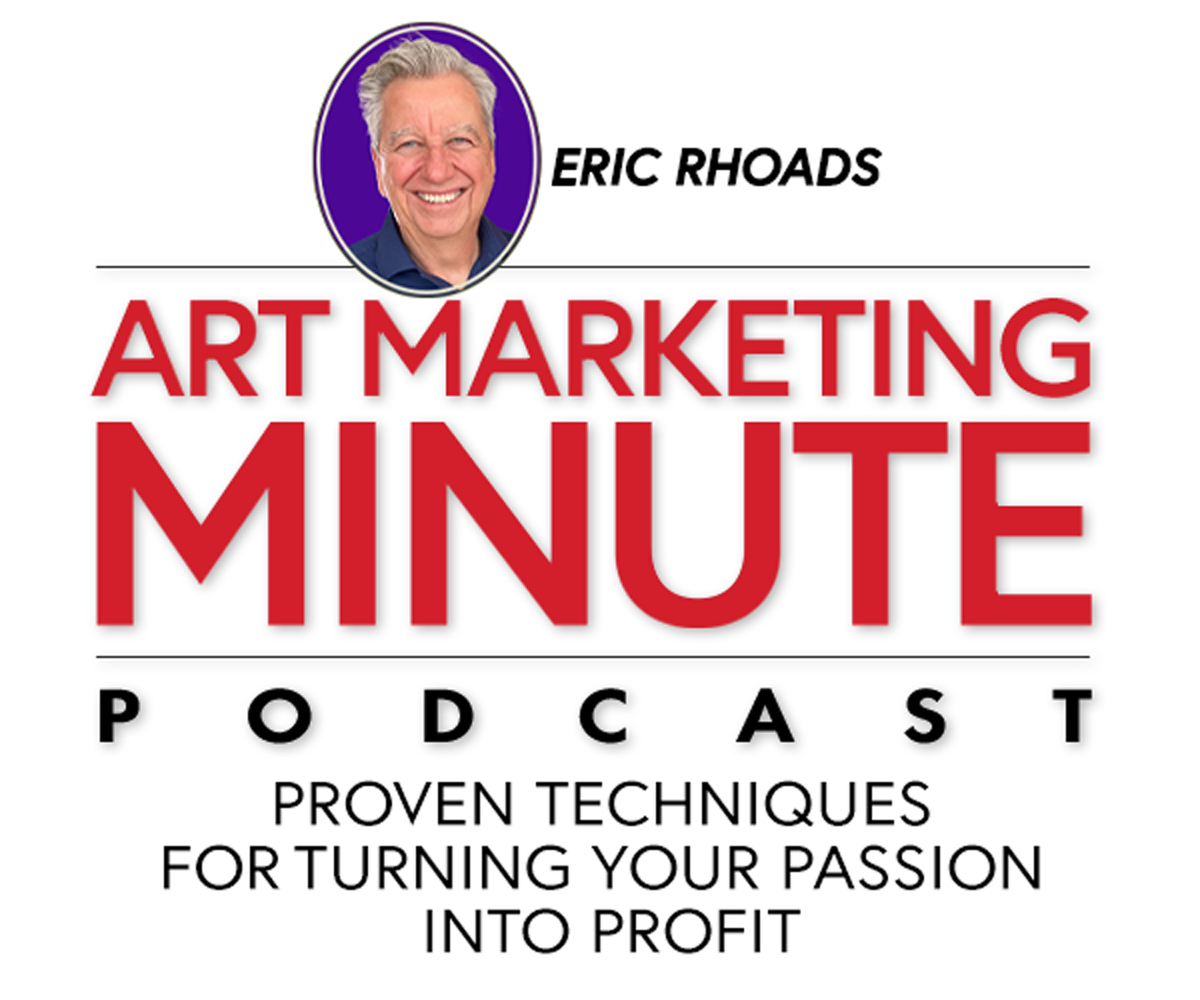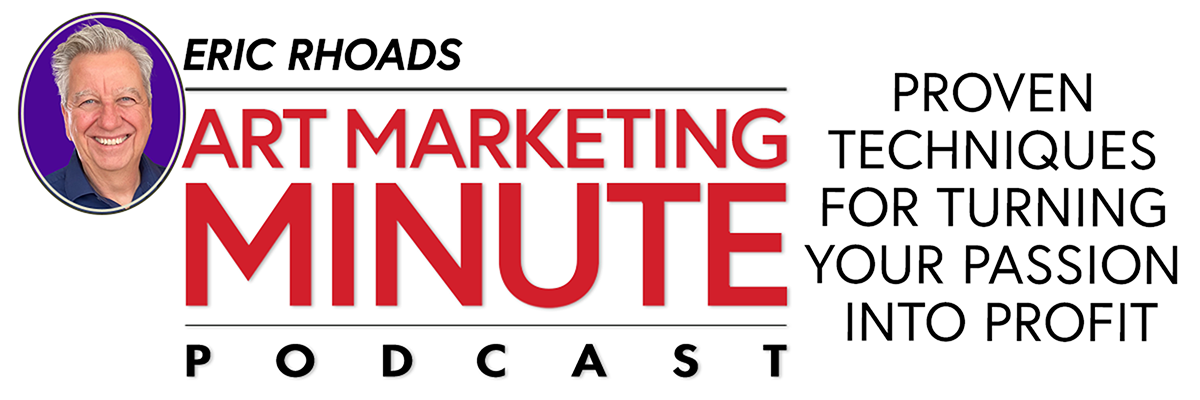Art Marketing Minute Podcast: Episode 97
In the Art Marketing Minute Podcast, you’ll learn how to sell your art, how to market your paintings, and everything else you need to know in order to have a successful art career. Each episode answers questions from artists by host Eric Rhoads, author of “Make More Money Selling Your Art,” publisher of several art magazines and newsletters, and author of ArtMarketing.com.
In this Art Marketing Minute, Eric Rhoads explains how to find the right buyer, and how to price your work “without feeling regretful”; and score insights on using acrylic versus oil, in regards to techniques as well as being able to sell the painting.
Listen to the Art Marketing Minute Podcast: Episode 97 >
Submit Your Art Marketing Question:
What questions do you have about selling your art? Email Eric today at [email protected] (include your name and where you’re from) to hear your question answered on an upcoming Art Marketing Minute Podcast.
FULL TRANSCRIPT of the Art Marketing Minute:
DISCLAIMER: The following is the output of a transcription from an audio recording of the Art Marketing Minute. Although the transcription is mostly correct, in some cases it is slightly inaccurate due to the recording and/or software transcription.
Announcer:
This is the Art Marketing Minute with Eric Rhoads, author of the Amazon best selling book, “Make More Money Selling Your Art.” In the marketing minute we answer your questions to help your art career brought to you by artmarketing.com, the place to go to learn more about marketing. Now, here’s your host, arts magazine publisher, Eric Rhoads.
Eric Rhoads:
In the marketing minute I try to answer your marketing questions and you can email those to me, [email protected]. There’s a question from crafts art camp. They say how do you find the right buyer? And how do you price work without feeling regretful? Well, there’s two very different questions. First, everyone tends to get hung up on big audiences. But big isn’t necessarily what you want or need to find the right buyer. You need someone who has a concentrated audience of buyers, meaning art buyers, in your case, people who love art, people who have a history of buying art, for instance, my magazine, fine art connoisseur has over 300 billionaires who read it. And that’s, of course, just scratching the surface. And these are people who happen to love art happen to buy the kind of art that you do. And of course, they’re obsessive about art like we are. So finding the right place to advertise is really critical. That’s essentially how you solve that problem finding the right buyer. Okay. Now, the other question. I’m not so sure exactly how to answer that other question. You said in terms of pricing without feeling regretful, not sure what that means, regretful that you didn’t charge enough regretful that it was not more affordable for others. What does regretful mean. So I’m kind of going to take a guess at it. I have a theory, a stored painting makes no money. Unless it’s something I really want to keep for my personal collection, I’d rather get something out of it than letting it sit. A painting might help me pay for art materials or something else. So there are times to let it sit. For instance, if you’re building a body of work for a gallery show, you want to let it sit so that you can build up that gallery show, but paintings need homes, most artists tend to underprice their works and, and price themselves out of business. In other words, if you’re selling it for too little, you’re probably not getting what you need out of it. Because your expenses are probably higher than you know they’re starting out high isn’t always an option, either with a strong brand. Now, the bigger the brand, the bigger the value in the eyes of the collector, then you can get higher prices, like Scott Christianson can command about any price he wants. So can Clyde ASPA big because they are in high demand. And they get great awards and these big shows. And so I think that’s where we ultimately want to be. But that takes some time. It takes exceptional painting. And it takes extensive marketing and branding, you have to become a well known brand. Now, there’s a lot of different ways we can do that. But that’s what it really takes. And then you command big prices. But even those people probably got started out selling at lower prices when they were unknown. And their work wasn’t as sophisticated. So you’ve got to be thinking about, you know, get their first idea, build it up. You can’t necessarily start with high prices, it doesn’t usually work. You got to kind of ramp yourself up create demand, the more demand the higher the price, etc. It’s called demand pricing.
The next question is from Stacey best, who says I painted acrylics, specifically Open Acrylics. They have built in drying retardants. And is this a problem and becoming a professional? I observed that most workshops are for oil paints, does this exclude acrylic paint artists? No, no, no, Stacy, I know the product. It’s a very good product, I’ve used it, it behaves very much like oil paint. And it’s good for travel. Because you don’t need turpentine. Water Based oils also do the same thing except they’re not acrylic. So you have a choice. But you don’t have to have Terps that way, right. So there are a ton of very rich, very successful painters who use acrylics. A great painting is a great painting. There are tons of oil painters, but there are also tons of Acrylic Painters in the demos that you’ve seen maybe unstaged at the convention or maybe in the videos, you know paint operates acrylic paint operates pretty much the same way as oil paint, not exactly the same, especially something like Open Acrylics, which paints more like oils than traditional acrylics, but the techniques you see on video or on stage are pretty close to identical. I would say now I’ve used all these products myself, and so I have a feel for it, but don’t get hung up on that. I think a great painting you know there are great artists out there who are using acrylics or squash or Open Acrylics or a lot of different materials, watercolors Of course, some people say watercolors don’t sell as Well, but you know what, there are some artists out there commanding giant prices for their watercolors. So it has a lot to do with the quality of the painting, plus the brand of the artist which we just talked about, and that helps get those prices so just do great paintings and don’t get too hung up on it. You know. Now also you can talk to your gallery, some galleries might be hung up on it, and they might say I’d rather you do oils but I think if they see great paintings that are going to sell, they’re going to say welcome to my gallery. I hope these marketing ideas are helpful.
Well, this has been the art marketing minute with me. Eric Rhoads. My goal in life is to eliminate the idea of the starving artists to help your dreams actually come true. So if you want to submit questions, simply email [email protected]. And to learn more about marketing ideas, you can visit Artmarketing.com. Thanks for listening.
How to Submit Your Art Marketing Questions: What questions do you have about selling your art? Email Eric today at [email protected] (include your name and where you’re from) to hear your question answered on an upcoming Art Marketing Minute Podcast.
> Visit EricRhoads.com (Publisher of ArtMarketing.com) to learn about opportunities for artists and art collectors, including:
- Art retreats
- International art trips
- Art conventions
- Art workshops (in person and online)
- And more!
